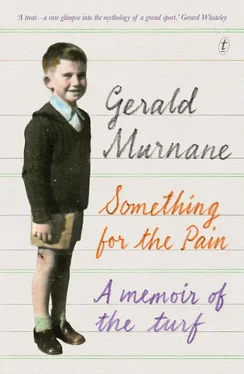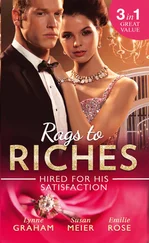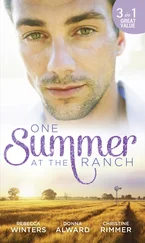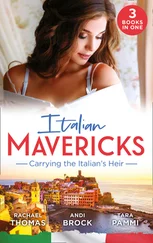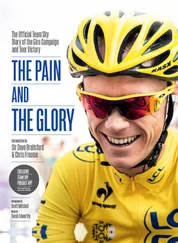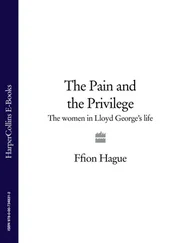I’m not going to try to explain in writing what I asserted in the previous sentence. I’m not going to try because I’ve come to accept that I’ve never met and will never meet anyone for whom horse racing matters so much. To put this another way: I’ve come to accept that of the millions of persons in this country who’ve listened at least once to Tchaikovsky’s 1812 Overture , I’m probably the only one who saw in mind while he or she listened a sort of mental film beginning before dawn on a remote country property where a man loads a racehorse into a horse float and ending, many hours later, with a scene in which two horses cross the finish line together. The scene is set in the 1960s, when the photo-finish system was in operation in Victoria but when the judge sometimes took several minutes to decide the issue in a finish that required him to await a developed print. (I’ve never understood the meaning of that technical term. I only know that the crowd used to be abuzz with speculation and the jockeys used to walk their mounts around and around in front of the grandstand while the judge awaited his print and afterwards looked at it through a magnifying glass.) Perhaps if I state only that the time between the horses crossing the line together and the judge finally signalling the result of the close finish is denoted, in my interpretation, by the passage towards the end of the overture in which a certain phrase is repeated several times, after which a certain note is repeated many times — perhaps if I state only this, then the astute reader may be able to acquire some notion of how the whole musical composition affects me, even today, nearly sixty years after I first began to understand the singular reason why certain pieces of music spoke to me and other pieces were devoid of relevance.
I probably wasted a hundred words and more on that last sentence. I’ll spend no more words on trying to explain how certain passages of music evoke for me certain episodes in horse races. I’ll simply end this section by listing some of the pieces of music that I most value for their evocative powers. No, I should explain first that I did not arrive easily at my understanding of the relevance for me of certain sorts of music.
After I had first seen in mind the complicated racing details provided by the 1812 Overture , I supposed that this might have been a one-off: an isolated incident never to be repeated. For more than twenty years, I went on listening to serious music and to all sorts of so-called folk music, some of it probably authentic and much of it probably spurious. I knew all along that some of what I listened to spoke to me eloquently, whereas other music meant little or nothing. I was not unaware that my attachment to certain pieces had to do with their providing me with racing imagery. But the penny took a long while to drop. I forced myself to listen to Beethoven’s string quartets and to some of Bach’s most difficult music, still supposing that I was missing out on some precious secret available only to persons of superior sensibility. Nothing happened. The experience left me unchanged. I thought of my father’s jeering at what he called snobs’ music.
I can’t remember when I accepted the truth: I had been listening to music all my life for the simple purpose of getting from it what I got from horse racing. I can’t remember, but I suspect it was in the 1990s, when I had reached middle age and no longer felt that I had to learn from other people. I suspect it was in the 1990s that I twisted to my own purposes the statement of some old-time writer or pontificator, one of those so-called authorities that I was so much in awe of as a young man. I wrote in some or another published piece of mine that all art, including music, aspires to the condition of horse racing. I wasn’t trying to be provocative. I was being honest.
Here, as a sort of appendix, are some of the musical compositions that I value most for the racing imagery that they bring to mind. The last few minutes of Beethoven’s Fantasia for Piano, Chorus and Orchestra are an exact evocation of the last furlongs of a gruelling race. Each of the first and the final movements of Beethoven’s Seventh Symphony brings to my mind a race contested by a horse whose fate concerns me. In the first movement, he is blocked as Rio Robin was once blocked. In the last movement, his apprentice jockey, following instructions, takes the horse to the front from the start and tries to lead throughout the race. Challenger after challenger appears in the straight, but the hero-horse holds them out. There’s a symphony by Schubert — is it the Great or the Unfinished? — in which the first movement concludes with an exact evocation of what is often called a blanket finish. (The expression probably derives from someone’s having said that the horses in the finish were so close that you could have thrown a blanket over all of them.) But my all-time-favourite piece of music, call it what you will — serious or classical or programmatic — is the first symphony by the Danish composer Niels Gade. When I first heard a recording of the work, I noticed at once that the last movement perfectly evoked the finish of a race full of meaning — well, the sort of meaning that people such as I get from racing. After I had listened a few more times to the symphony, I was able to derive from all four movements a complex series of images of landscapes and racecourses that the composer himself could never have anticipated.
A self-appointed critic of music wrote to me recently that Niels Gade is a romantic of little interest to him. The man who told me that will probably never read these words but I wish I could engage with him one day in a discussion as to what exactly takes place in the minds of people such as himself when they listen to what they call great music.
19. Targie and Ladies’ Pants
IN DECEMBER 1953, I had almost reached the end of my fifteenth year. I had listened to radio descriptions of many hundreds of horse races, and I had read in newspapers the results of many thousands of such races. I had even seen occasionally in a cinema a brief black-and-white film sequence of the so-called highlights of some or another Melbourne Cup. And yet, I had still not set foot on a racecourse or watched any part of an actual race. I used to think this was the result of my parents’ policy: they were trying to keep me from going the way of my father. I’m more inclined now to believe my deprivation was simply the result of circumstances. My father bet often but went to a meeting only if he had reliable information about one of the horses racing there. On such occasions, he would have preferred not to have his eldest son trailing after him. If I had looked more deeply into the matter at the time, I would have seen that my mother might have considered herself worse off than I. She had never been with her husband to a race meeting.
My first visit to the races was not even planned. At around midday on a certain Wednesday in the December mentioned, a car pulled up at our front gate in what is now South Oakleigh. In the back seat was Len Luxford, one of my father’s best mates and a keen punter, although on a modest scale. Len, like my father, had no car, but he was being driven to the Mornington races by his son-in-law. The man’s wife, Len’s daughter, was in the front passenger seat, but Len offered my father a seat beside him in the rear. I’ll never know who suggested there was room also for me.
Mornington in those days was surrounded by open paddocks and was considered a country town, but even country meetings attracted much larger crowds than nowadays, and we were late arriving in the car park. The first race was a hurdle race and I had been looking forward to watching it but, just as we walked through the entrance to the course, I saw, through the gap between the members’ and the public grandstands, the bobbing caps of the riders as the field in the hurdle race came up the straight for the first time. That gave me the first of my several surprises at my first race meeting. The horses seemed to be travelling at breakneck speed. Whenever I had listened to a radio broadcast, I had supposed the horses to be ambling through the early stages of each race. Reporting this today reminds me of how removed I was from racing in the very years when I was becoming obsessed by it. Horses, jockeys, trainers, even the coloured jackets that so interested me — I had read about them or heard about them but never, or hardly ever, set eyes on them.
Читать дальше
